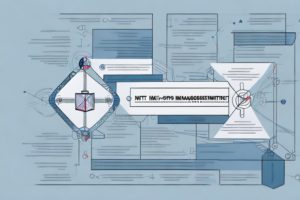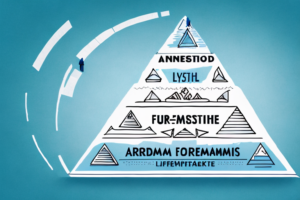What is incident response in RMF?

A computer system with a security shield in the center
Incident response in RMF (Risk Management Framework) is a critical process that helps organizations detect, analyze, and respond to cybersecurity incidents and other events that can cause damage, loss of data, or disruption of operations. In simple terms, incident response is the set of procedures followed by an organization to manage and mitigate the impact of security incidents, such as data breaches, malware infections, phishing attacks, or unauthorized access to the network.
Understanding the basics of RMF
RMF is a structured approach to cybersecurity management that is widely used by government agencies and private organizations to manage risks and ensure compliance with security standards. The RMF consists of six steps that are applied throughout the entire system development life cycle:
- Categorize the information system and define the security objectives
- Select and implement security controls
- Assess the effectiveness of the security controls
- Authorize the system to operate based on the risk assessment
- Continuous monitoring and updating of the system
- Respond to incidents and events that affect the security posture of the system
The RMF process is not a one-time event, but rather a continuous cycle that requires ongoing attention and maintenance. This is because cybersecurity threats and risks are constantly evolving, and new vulnerabilities can emerge at any time. Therefore, it is important to regularly review and update the security controls and risk assessments to ensure that the system remains secure.
Another important aspect of RMF is the involvement of all stakeholders in the process. This includes not only the IT department, but also business owners, users, and other relevant parties. By involving all stakeholders, the organization can ensure that everyone is aware of the risks and security requirements, and can work together to implement effective security measures.
The role of incident response in RMF
Incident response plays a crucial role in the RMF by providing a mechanism to detect, analyze, and respond to security incidents that occur in an information system. The response process is designed to minimize the impact of security incidents and to restore normal operations as soon as possible. Incident response also feeds back into the RMF by providing valuable information that can be used to update and improve the security posture of the system.
One of the key benefits of incident response is that it helps organizations to identify vulnerabilities and weaknesses in their security controls. By analyzing the root cause of security incidents, incident response teams can identify areas where the system is most vulnerable and take steps to address these weaknesses. This proactive approach to security helps to prevent future incidents and strengthens the overall security posture of the system.
Another important aspect of incident response is the role it plays in compliance with regulatory requirements. Many regulations, such as HIPAA and PCI-DSS, require organizations to have an incident response plan in place. By implementing an effective incident response process, organizations can demonstrate their compliance with these regulations and avoid costly fines and penalties.
Why is incident response important in RMF?
Incident response is important in RMF because it allows organizations to minimize the impact of security incidents and prevent further damage. By following established incident response procedures, organizations can quickly contain the incident, investigate the root cause, and take appropriate actions to prevent it from happening again. Incident response also helps to maintain the integrity, confidentiality, and availability of the information system, which are critical components of cybersecurity management.
What are the key elements of incident response in RMF?
The key elements of incident response in RMF can be summarized as:
- Preparation: Establishing incident response policies, procedures, and training programs to ensure readiness and effective response
- Detection and analysis: Recognizing and analyzing events and incidents that pose a threat to the system and its assets
- Containment and eradication: Preventing the incident from spreading or causing further damage, and removing any malicious code or activity from the system
- Recovery and restoration: Resuming normal operations, restoring data, and repairing any damage resulting from the incident
- Post-incident activities: Conducting a detailed post-mortem analysis to identify root causes and lessons learned, and updating incident response procedures and controls accordingly.
Incident response phases in RMF – An overview
The incident response process in RMF can be divided into four main phases:
- Preparation and planning
- Detection and analysis
- Containment, eradication, and recovery
- Post-incident activities
Each phase involves specific activities and procedures that are designed to achieve the overall goal of responding to the incident in a timely, effective, and organized manner.
Incident identification and reporting in RMF
Incident identification is the first step in the incident response process, and it involves recognizing and reporting events and incidents that may represent a threat to the security of the information system. Identification can come from a variety of sources, such as system logs, network monitoring, antivirus alerts, or user reports. Reporting is the process of informing the incident response team (IRT) about the incident and providing all the necessary information to begin the response process.
Assessing and analyzing incidents in RMF
Once an incident has been reported, the IRT will assess and analyze the incident to determine its severity, impact, and scope. This phase involves collecting data, analyzing available evidence, and assessing the potential risk to the system and its assets. The IRT will also prioritize the response actions based on the severity and impact of the incident.
Response planning and execution in RMF
Response planning involves creating a detailed plan that outlines the measures to be taken to contain, eradicate, and recover from the incident. The plan should include specific actions, procedures, and timelines, as well as the roles and responsibilities of the incident response team. Response execution involves implementing the plan, monitoring progress, and adapting to changing circumstances as necessary. Communication is also a critical element of response planning and execution, as it ensures coordination and collaboration among team members and stakeholders.
Lessons learned and continuous improvement in incident response for RMF
After the incident has been resolved, it’s important to conduct a thorough post-mortem analysis to identify the root cause, effectiveness of response actions, and lessons learned. This information can be used to update and improve incident response procedures and controls, as well as to enhance the overall security posture of the information system. Continuous improvement is a critical aspect of incident response in RMF, as it helps to ensure that the system is constantly evolving to meet emerging threats and changing security requirements.
Best practices for incident response in RMF
Some best practices for effective incident response in RMF include:
- Establishing clear policies, procedures, and roles and responsibilities for incident response
- Regularly training and testing the incident response team to ensure readiness and effectiveness
- Utilizing automated incident response tools and technologies to improve response times and reduce manual effort
- Coordinating with external stakeholders, such as law enforcement and regulatory agencies, as required
- Ensuring that incident response is integrated into the overall risk management framework and that lessons learned are used to update the framework as needed.
Common challenges faced during incident response in RMF
Some common challenges that organizations may face during incident response in RMF include:
- Lack of resources or expertise in incident response
- Difficulty identifying and analyzing complex or sophisticated threats
- Coordination and communication issues among team members and stakeholders
- Limited visibility or monitoring capabilities
- Legal and regulatory compliance requirements
Organizations can overcome these challenges by investing in incident response training, technologies, and tools, as well as by creating a culture of collaboration and continuous improvement.
Effective communication strategies during incident response for RMF
Effective communication is critical during incident response in RMF, as it helps to ensure that all team members and stakeholders are informed and working towards the same goals. Some strategies for effective communication during incident response include:
- Establishing clear lines of communication and chain of command
- Utilizing incident response platforms and tools that facilitate communication and collaboration
- Being transparent and honest in all communications
- Providing regular updates and status reports
- Actively listening to feedback and concerns from team members and stakeholders
Incident response team roles and responsibilities for RMF
The incident response team (IRT) is responsible for managing the entire incident response process in RMF. The IRT should consist of personnel with the appropriate skills and expertise to effectively respond to incidents. Common IRT roles include:
- Incident response coordinator
- Incident handler
- Forensic analyst
- Network security engineer
- Communications specialist
- Legal and compliance representative
Each role has specific responsibilities and tasks that are critical to the success of the incident response process.
Tools and technologies to support incident response in RMF
There are many tools and technologies that can be used to support incident response in RMF, such as:
- Intrusion detection and prevention systems to detect and prevent malicious activity
- Security information and event management (SIEM) systems to collect and analyze security-related data
- Vulnerability scanners to identify potential vulnerabilities in the system
- Malware analysis tools to analyze and identify malicious code
- Automated incident response platforms that can trigger response actions based on predefined rules
Conclusion and key takeaways from the article on incident response in RMF
Incident response is a critical component of cybersecurity management in RMF. Effective incident response can help organizations protect their assets, maintain the integrity and confidentiality of their data, and ensure the availability of their systems. By following established incident response procedures and best practices, organizations can minimize the impact of security incidents and learn from each experience to improve their security posture over time.



